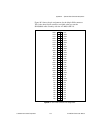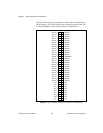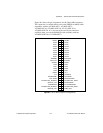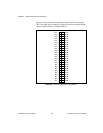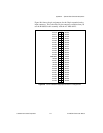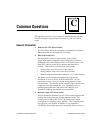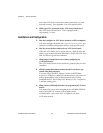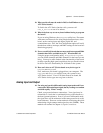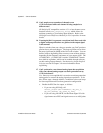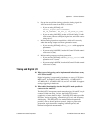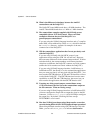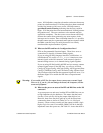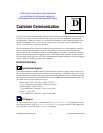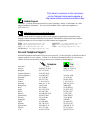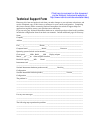
Appendix C Common Questions
AT-MIO/AI E Series User Manual C-4
National Instruments Corporation
15. Can I sample across a number of channels on an
AT E Series board while each channel is being sampled at a
different rate?
NI-DAQ for PC compatibles version 4.5.1 or later features a new
function called SCAN_Sequence_Setup, which allows for
multirate scanning of your analog input channels. Refer to the
NI-DAQ Function Reference Manual for PC Compatibles for more
details.
16. I’m using the DACs to generate a waveform, but I discovered with
a digital oscilloscope that there are glitches on the output signal.
Is this normal?
When it switches from one voltage to another, any DAC produces
glitches due to released charges. The largest glitches occur when
the most significant bit (MSB) of the D/A code switches. You can
build a lowpass deglitching filter to remove some of these glitches,
depending on the frequency and nature of your output signal. The
AT-MIO-16E-1, AT-MIO-16E-2 and the AT-MIO-64E-3 boards
have built-in reglitchers, which can be enabled through software,
on their analog output channels. See the Analog Output Reglitch
Selection section in Chapter 3 for more information about
reglitching.
17. Can I synchronize a one-channel analog input data acquisition
with a one-channel analog output waveform generation on my
AT E Series board?
Yes. One way to accomplish this is to use the waveform generation
timing pulses to control the analog input data acquisition. To do
this, follow steps a through d below, in addition to the usual steps
for data acquisition and waveform generation configuration.
a. Enable the PFI5 line for output, as follows:
• If you are using NI-DAQ, call
Select_Signal(deviceNumber, ND_PFI_5,
ND_OUT_UPDATE, ND_HIGH_TO_LOW).
• If you are using LabVIEW, invoke Route Signal VI with
signal name set to PFI5 and signal source set to AO Update.



